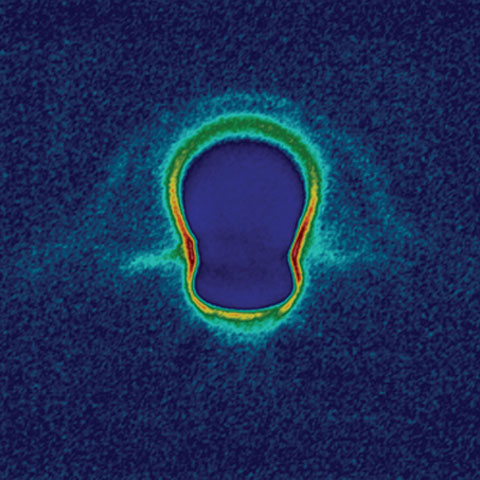Lunar Charge Protection

A 2-dimensional slice of a 3-d simulation of the ion charge density just above the moon's surface.
Image Credit: J. Deca, A. Divin, G. Lapenta, B. Lembège, S. Markidis, and M. Horányi/PRL/APS
June 20, 2014
The Sun constantly sends out high-energy charged particles in all directions — a stream of plasma known as the solar wind. Here on Earth, we have a strong magnetic field that deflects these particles before they hit us. Without this protection, life on Earth would not have evolved to its current state.
Smaller objects, however, don't have the benefit of a strong magnetic field or atmosphere. The moon's lack of a significant atmosphere, for instance, has contributed to the many impact craters that litter the lunar surface.
The moon also lacks an intrinsic magnetic field, so it's not protected from bombardments from the solar wind. Nonetheless, there's still magnetic activity on the lunar surface in the form of Lunar Magnetic Anomalies (LMA). Some research has suggested that these magnetic fields on the surface — some of which can stretch for hundreds of kilometers — arose from impacts by foreign objects.
To create the image above, Jan Deca (KU Leuven in Belgium) and his team created simulations of the solar wind's interactions with these anomalies. The image above represents a horizontal slice of the ion density above the lunar surface where an LMA was present after it was hit with solar wind. Red indicates a higher relative density and blue represents a lower relative density.
From their simulations, the research team found that these magnetic anomalies can create mini-magnetospheres that do shield parts of the lunar surface from the solar wind. Nonetheless, this shielding proved ephemeral in the simulations and may not provide reliable protection to future lunar explorers and their scientific equipment. The team published their results earlier this spring in Physical Review Letters.














